Deck 9: Workers, Farmers, and Slaves: The Transformation of the American Economy, 1815-1848
Question
Question
Question
Question
Question
Question
Question
Question
Question
Question
Question
Question
Question
Question
Question
Question
Question
Question
Question
Question
Question
Question
Question
Question
Question
Question
Question
Question
Question
Question
Question
Question
Question
Question
Question
Question
Question
Question
Question
Question
Question
Question
Question
Question
Question
Question
Question
Question
Question
Question

Unlock Deck
Sign up to unlock the cards in this deck!
Unlock Deck
Unlock Deck
1/50
Play
Full screen (f)
Deck 9: Workers, Farmers, and Slaves: The Transformation of the American Economy, 1815-1848
1
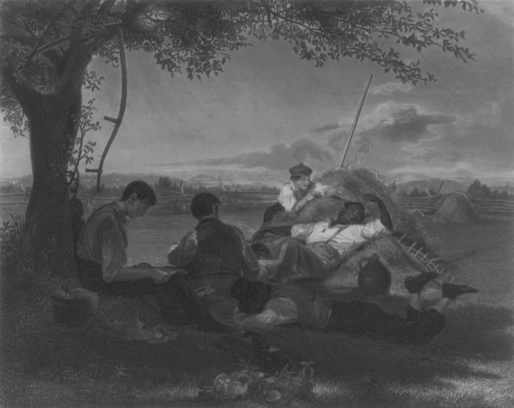
Jethro Wood and John Deere contributed to efficiency in farming during the market revolution by improving the .
A) freight wagon
B) tractor
C) thresher
D) plow
plow
2
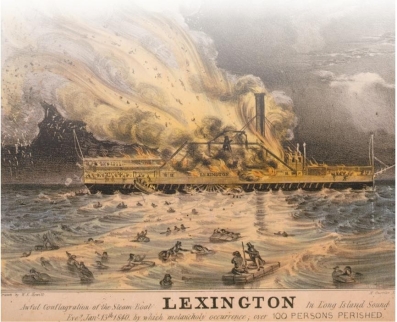
The group of workers most dramatically affected by the onset of industrialization was
A) subsistence farmers
B) artisans
C) slave laborers
D) women
artisans
3

The first major development in improving transportation in the United States during the early nineteenth century took place with the construction of .
A) steamboats
B) railroads
C) roads and turnpikes
D) canals
roads and turnpikes
4
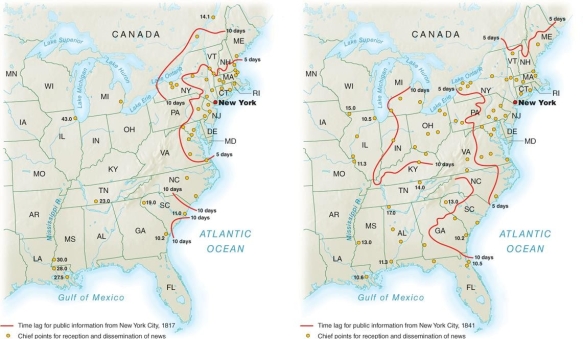
The Biblical quote "What hath God Wrought?" was made by Samuel Morse in 1844 when referencing the creation of the .
A) telegraph
B) steamboat
C) Erie Canal
D) railroad

Unlock Deck
Unlock for access to all 50 flashcards in this deck.
Unlock Deck
k this deck
5

The improvements in communication that took place between 1817 and 1841 as shown on this map were largely due to .
A) Indian removal from the South and West
B) national dependence on Southern cash crops
C) improvements in transportation
D) development of factories in New England and the mid-Atlantic

Unlock Deck
Unlock for access to all 50 flashcards in this deck.
Unlock Deck
k this deck
6
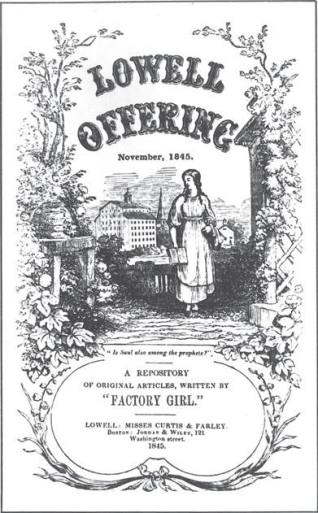
How was the title page of the last issue of the Lowell Offering deceptive in the message it was sending to its readers?
A) Mill women had few opportunities to educate themselves while working at Lowell.
B) Mill work was demanding and overwhelming.
C) The Lowell mills were located in an arid and bleak region of New England.
D) Mill women earned less money than their female contemporaries in domestic service.

Unlock Deck
Unlock for access to all 50 flashcards in this deck.
Unlock Deck
k this deck
7

Why was metropolitan industrialization more diverse than industrialization in mill towns?
A) Factories employed both men and women.
B) Factories were prone to strikes and labor unrest.
C) Factories produced a wide variety of manufactured goods.
D) Factories benefitted both workers and owners equally.

Unlock Deck
Unlock for access to all 50 flashcards in this deck.
Unlock Deck
k this deck
8

Nathaniel Currier's Conflagration of the Steamboat Lexington, a colored lithograph that was cheaper to print than a traditional engraving, became a bestseller with the American public because it .
A) celebrated technological triumph
B) displayed the nation's wealth and ingenuity
C) commemorated a patriotic event
D) exploited and sensationalized disaster

Unlock Deck
Unlock for access to all 50 flashcards in this deck.
Unlock Deck
k this deck
9

The Lowell strike of 1834 was a result of .
A) unsafe working conditions
B) the length of the workday
C) inequality in salaries
D) a wage cut

Unlock Deck
Unlock for access to all 50 flashcards in this deck.
Unlock Deck
k this deck
10
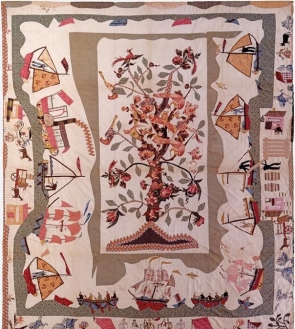
By 1840, which means of transportation had the greatest impact on the speed with which goods and people could move around the country?
A) the new network of roads and turnpikes
B) the 3,300 miles of new canals
C) the steam powered train
D) the steamboat

Unlock Deck
Unlock for access to all 50 flashcards in this deck.
Unlock Deck
k this deck
11

The transformation that resulted from innovations in fields such as agriculture, industry, and transportation during the nineteenth century in the United States is known as .
A) the American System
B) the market revolution
C) the Industrial Revolution
D) artisan production

Unlock Deck
Unlock for access to all 50 flashcards in this deck.
Unlock Deck
k this deck
12

As shown in this quilt by Hannah Stockton Stiles, what effect did steamboats have on urban waterfronts, such as the one in Philadelphia?
A) Waterfronts were dominated by factories.
B) Waterfronts served mainly as centers of agricultural production.
C) Waterfronts became off limits to others.
D) Waterfronts became busy and prosperous.

Unlock Deck
Unlock for access to all 50 flashcards in this deck.
Unlock Deck
k this deck
13

How did industrialization and factory work change the way that artisans and other workers performed their jobs?
A) Factory workers followed a strict schedule that mandated a steady daily work pace.
B) More factory workers than artisans used their homes for both living and working.
C) The factory system made greater use of apprentice labor to assist employees.
D) Factory work required less supervision than work at home.

Unlock Deck
Unlock for access to all 50 flashcards in this deck.
Unlock Deck
k this deck
14

How was the National Road different from earlier roads and turnpikes that had been constructed in the United States?
A) It was the first federally funded road in the United States.
B) It was the first toll road in the United States.
C) It was the first time that a method of transportation combined land routes and waterways.
D) It connected major cities in New England and the mid-Atlantic for the first time.

Unlock Deck
Unlock for access to all 50 flashcards in this deck.
Unlock Deck
k this deck
15

In The Tree of Liberty, the illustrator portrays the differences between .
A) small farms and large Southern plantations
B) the lives of immigrants and those of people born in the United States
C) eighteenth-century and nineteenth-century America
D) the organization of free and slave labor in the North and South

Unlock Deck
Unlock for access to all 50 flashcards in this deck.
Unlock Deck
k this deck
16

How does William Sidney Mount's painting Farmers Nooning contradict the trends in farming that were taking place in the United States while a market economy was developing?
A) The farm tools shown in the painting were typical of the mechanized tools used in commercial farming.
B) Commercialized farming placed greater emphasis on the use of slave labor.
C) Commercialized farming challenged the traditional ideas and rituals of farming.
D) The painting focuses on the raising of livestock instead of commercial farming.

Unlock Deck
Unlock for access to all 50 flashcards in this deck.
Unlock Deck
k this deck
17

Before 1815, most American farmers in the North and South spent most of their efforts growing enough food to feed their families, which was known as achieving a .
A) surplus
B) system of barter
C) "competence"
D) cash crop

Unlock Deck
Unlock for access to all 50 flashcards in this deck.
Unlock Deck
k this deck
18
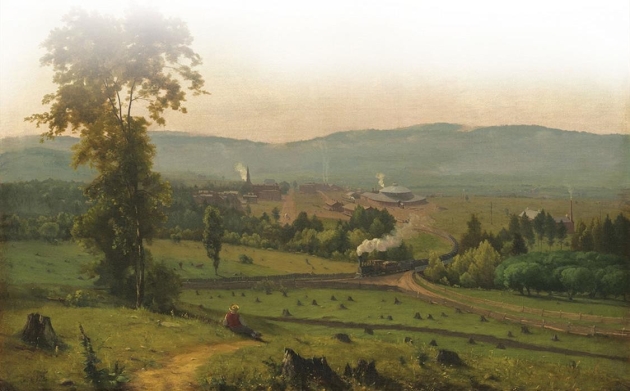
What was one theme about the impact of the market revolution and industrialization that George Inness addressed in his 1855 painting The Lackawanna Valley?
A) Traditional farm life was in direct conflict with industrialization.
B) Economic development took a toll on the landscape.
C) Paintings became accurate forms of advertisement for the first time.
D) Artistic truth was more important than the necessities of the marketplace.

Unlock Deck
Unlock for access to all 50 flashcards in this deck.
Unlock Deck
k this deck
19

How were the Waltham System and Lowell Experiment different from earlier factory systems in the United States?
A) These factories were the first to use water power for their operations.
B) The factories were established in small existing buildings found in large cities.
C) These were the first factories to house their labor force in company-owned dormitories.
D) These were the first factories constructed in the South.

Unlock Deck
Unlock for access to all 50 flashcards in this deck.
Unlock Deck
k this deck
20

How did the creation of a market economy affect many American farmers in the early nineteenth century?
A) They began to grow a diverse array of crops to feed their families.
B) They began to focus on crops that they could sell for cash.
C) They began to grow crops exclusively for export.
D) They began to grow fruits and vegetables from different parts of the world.

Unlock Deck
Unlock for access to all 50 flashcards in this deck.
Unlock Deck
k this deck
21
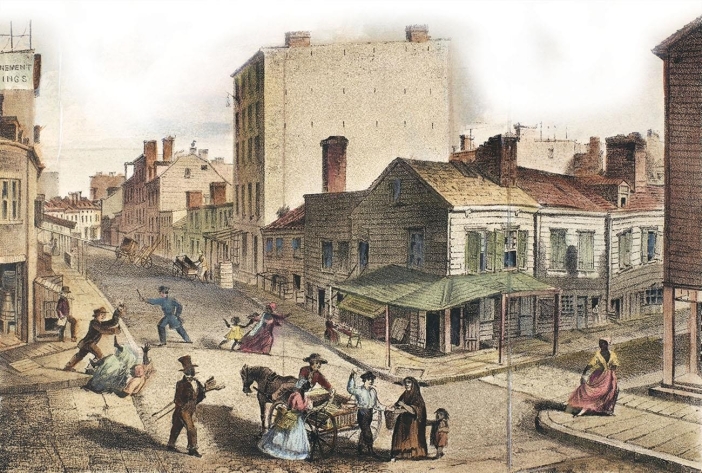
What did a neighborhood like New York City's Gramercy Park reveal about the urban elite?
A) their support for a new, inclusive urban society
B) their desire for seclusion and segregation from lower classes
C) their longing for the old ways
D) their fear of progress

Unlock Deck
Unlock for access to all 50 flashcards in this deck.
Unlock Deck
k this deck
22
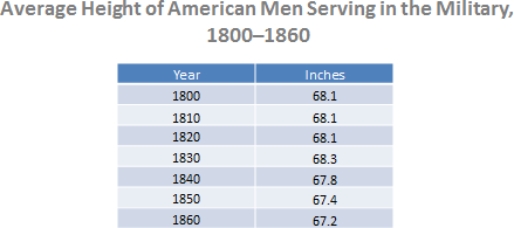
What do changes in the average height of Americans serving in the military reveal about the general health of the nation during the era of the market revolution?
A) The general health of the nation declined due to a series of droughts that hurt American agricultural production.
B) Mass production of processed foods led to the consumption of food substances that were not healthy for the American public.
C) The higher standard of living that resulted for all Americans led to purchases of unhealthy sugar-filled foods that stunted growth.
D) Declines in nutrition levels showed that not all Americans were benefitting equally from a market revolution.

Unlock Deck
Unlock for access to all 50 flashcards in this deck.
Unlock Deck
k this deck
23
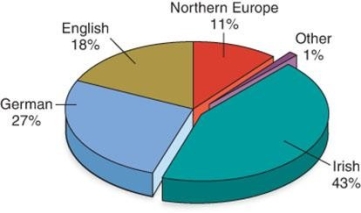
What was one factor from the Sara Roberts case that resulted in the Massachusetts Supreme Court decision to justify segregated educational facilities in its state?
A) Racially segregated schools imposed inferiority and degradation on an entire race.
B) Schools for free blacks were roughly equal to schools for white children.
C) Attending white schools would mean that free blacks were taking on airs of superiority.
D) Free black children would have no opportunity to learn about their culture in white schools.

Unlock Deck
Unlock for access to all 50 flashcards in this deck.
Unlock Deck
k this deck
24
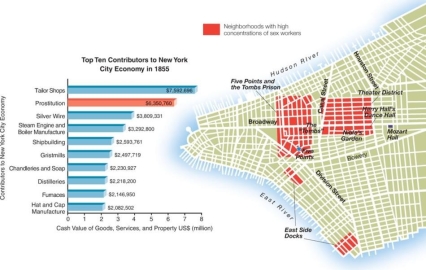
What is one common misconception that people currently have about the planter class in Southern society?
A) Most planters lived in magnificent mansions instead of the simpler homes they actually constructed.
B) Most plantations lacked large numbers of slaves and actually relied on free black labor.
C) Southern plantations were more likely to be composed of a single male owner and his slaves rather than being the family-based farms that actually existed.
D) Most of the planters from the highest class owned between one and ten slaves instead of the much higher numbers they actually were thought to have possessed.

Unlock Deck
Unlock for access to all 50 flashcards in this deck.
Unlock Deck
k this deck
25

How were German immigrants to the United States in the mid-nineteenth century different from their contemporary Irish immigrants?
A) They were readily able to assimilate easily into Anglo-American society.
B) They were generally poorer than the Irish.
C) They were exclusively Protestant.
D) They tended to have a wider variety of work skills.

Unlock Deck
Unlock for access to all 50 flashcards in this deck.
Unlock Deck
k this deck
26
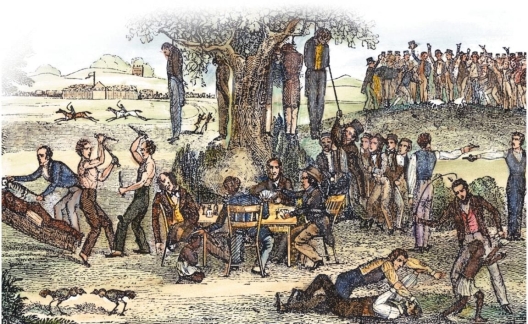
The view of the South portrayed by Northern abolitionists in the illustration "Southern Violence" implied that the situations shown in this image, such as lynching, dueling, blood sports, and whipping, were connected to the .
A) code of honor among Southern gentlemen
B) brutality of slavery
C) consequences of living in a hot-weather environment
D) greed associated with a cash crop economy

Unlock Deck
Unlock for access to all 50 flashcards in this deck.
Unlock Deck
k this deck
27
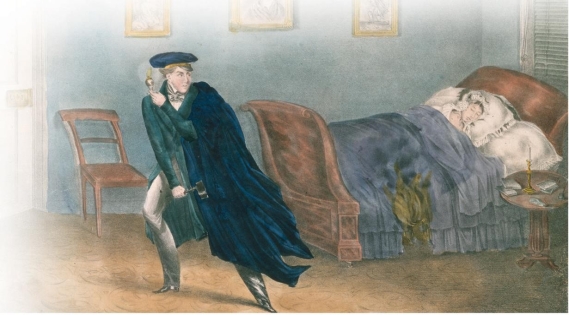
The "Bible riots" that took place in Philadelphia in 1834 were largely centered on
A) racial bigotry
B) anti-Semitism
C) hostilities between evangelical and more traditional Protestants
D) anti-Catholicism

Unlock Deck
Unlock for access to all 50 flashcards in this deck.
Unlock Deck
k this deck
28
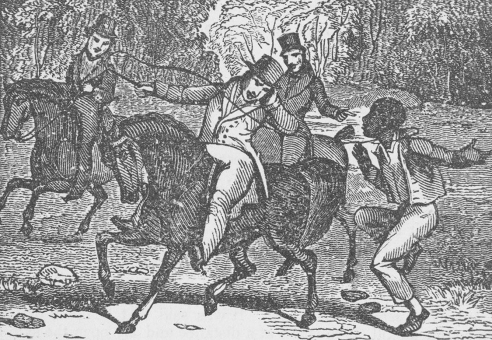
One typical feature of yeoman farmers in the South was that they .
A) worked their own small farms, often without slave labor
B) produced large surpluses of commercial crops for market
C) made up the core of state legislators, judges, and militia officers
D) were financially independent enough to transport their own crops to market

Unlock Deck
Unlock for access to all 50 flashcards in this deck.
Unlock Deck
k this deck
29

The portrayal of the murdered prostitute Helen Jewett in this print by Currier and Ives seems to emphasize her .
A) guilt
B) sensuality
C) vulnerability
D) low regard in society

Unlock Deck
Unlock for access to all 50 flashcards in this deck.
Unlock Deck
k this deck
30
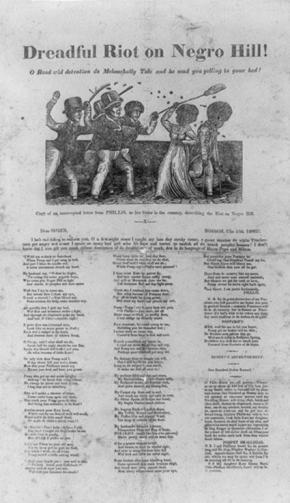
It can be inferred from this broadside that this attack in Boston on the African American woman and disabled man was a direct result of .
A) free blacks trying to copy the genteel lifestyle of their white neighbors
B) economic competition between free blacks and whites for highly skilled jobs
C) opening white schools in the community to African American students
D) retribution for attacks on white members of the community

Unlock Deck
Unlock for access to all 50 flashcards in this deck.
Unlock Deck
k this deck
31

What factor most contributed to the decline of "walking cities" and allowed city dwellers to live farther away from the core center of the cities where they worked?
A) improvements in mass transportation such as the omnibus and steam-powered locomotive
B) a rising crime rate within the centers of cities
C) poor sanitation and lack of healthy drinking water within the city's core
D) a desire to move away from areas populated by immigrants and the poor

Unlock Deck
Unlock for access to all 50 flashcards in this deck.
Unlock Deck
k this deck
32

What is one assumption that can be made about the prostitution industry in New York City during the early nineteenth century?
A) Prostitution was an unprofitable venture for participants in the sex trade.
B) Most centers of prostitution were in the entertainment district and the busy waterfront.
C) Brothels were more likely to be found in wealthier neighborhoods and the suburbs.
D) Small numbers of unemployed women flocked to New York City in the early 1800s.

Unlock Deck
Unlock for access to all 50 flashcards in this deck.
Unlock Deck
k this deck
33

This antislavery woodcut shows a slave patrol terrorizing a slave for .
A) breaking his tools
B) slowing down his pace of work
C) traveling without written permission from his owner
D) leading a slave insurrection

Unlock Deck
Unlock for access to all 50 flashcards in this deck.
Unlock Deck
k this deck
34
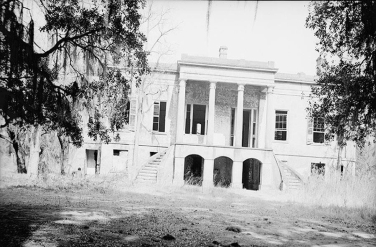
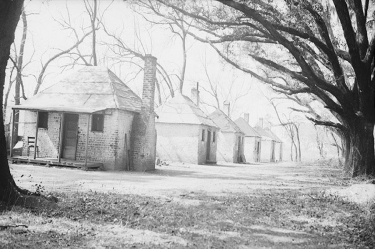
What emotion is elicited by plantation mistress Mary Kendall's passage in her diary that states "for about three weeks I did not have the pleasure of seeing one white female face."?
A) joy
B) melancholia
C) hostility
D) nostalgia

Unlock Deck
Unlock for access to all 50 flashcards in this deck.
Unlock Deck
k this deck
35

Based on this graph, it can be inferred that the greatest factor contributing to the high percentage of Irish immigrants to the United States during the mid-nineteenth century was
A) greater economic opportunities in the United States
B) religious persecution by the Protestant English
C) failure of the Irish potato crop
D) political upheaval resulting in mistreatment of liberal intellectuals

Unlock Deck
Unlock for access to all 50 flashcards in this deck.
Unlock Deck
k this deck
36

How did the experience of free blacks in the South compare with the experience of free blacks in the North?
A) Those in the South lived in cities that were less spatially segregated.
B) Those in the South were less religious and had lower church attendance.
C) Those in the North had greater opportunities for working as skilled artisans.
D) Those in the South faced greater economic competition from immigrants.

Unlock Deck
Unlock for access to all 50 flashcards in this deck.
Unlock Deck
k this deck
37

Between 1800 and 1840, the population of inland cities like Chicago, St. Louis, Pittsburgh, and Cincinnati quadrupled mostly due to railroad connections and .
A) healthy living environments
B) locations by rivers and lakes
C) profits from commercialized farming
D) a large influx of Irish and German immigrants

Unlock Deck
Unlock for access to all 50 flashcards in this deck.
Unlock Deck
k this deck
38

Even though urban centers in the North and Midwest were home to some of the largest free African American communities in the nation during the mid-nineteenth century, what was one major problem encountered by members of these communities?
A) Free African Americans were relegated to the same agricultural jobs they had in the South.
B) A lack of thriving cultural centers and development was common to these communities.
C) Racial segregation was more pronounced here than in cities in the South.
D) Free African Americans had no opportunities for advancement or economic prosperity.

Unlock Deck
Unlock for access to all 50 flashcards in this deck.
Unlock Deck
k this deck
39

From the perspective of New York City's elite, this image of the Five Points neighborhood confirmed their belief that it was a .
A) center of industry and hard workers
B) ramshackle neighborhood teeming with crime
C) poor but thriving, multiethnic community
D) vibrant neighborhood suitable for raising children

Unlock Deck
Unlock for access to all 50 flashcards in this deck.
Unlock Deck
k this deck
40


These photographs taken in the 1930s of Henry McAlpin's "big house" and slave quarters on Hermitage Plantation in Georgia reveal that this estate was atypical of most plantations because
A) it was located in an area of the South not conducive to commercial farming
B) the buildings were generally smaller and less grandiose than most buildings found on plantations
C) the slave quarters were located on a different plantation altogether
D) these structures were constructed from brick instead of more commonly-used lumber

Unlock Deck
Unlock for access to all 50 flashcards in this deck.
Unlock Deck
k this deck
41
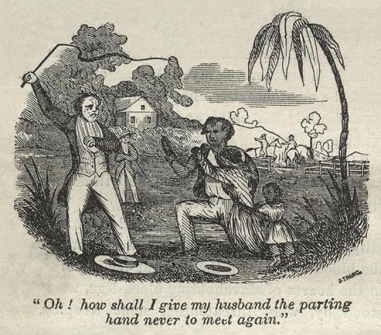
This broadside from an antislavery almanac shows that the whip, perhaps the most commonly used symbol of Southern slavery, was used as a tool to .
A) punish slaves for work slowdown and intentional destruction of their tools
B) castigate mischievous slave children
C) separate slave families so they could be sold apart from each other
D) force slaves to work in the fields

Unlock Deck
Unlock for access to all 50 flashcards in this deck.
Unlock Deck
k this deck
42

Given that wealthy white Southerners enjoyed such entertainment as jousting and settled matters of honor with dueling, what seems to have been one major difference between Southern and Northern cultures?
A) Southerners enjoyed much leisure time, as Northerners were focusing more of their efforts on work.
B) The South was a violent place, whereas the North was not.
C) The South was dominated by an elite class, whereas there was a greater sense of egalitarianism between classes in the North.
D) As industrialization progressed in the North, Southerners were turning toward the past.

Unlock Deck
Unlock for access to all 50 flashcards in this deck.
Unlock Deck
k this deck
43

"Jumping the broom" was a slave ritual associated with .
A) funerals
B) marriage
C) arrival of newborn infants
D) baptism

Unlock Deck
Unlock for access to all 50 flashcards in this deck.
Unlock Deck
k this deck
44

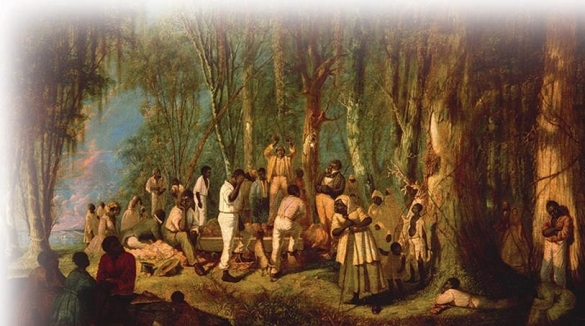
As a result of Nat Turner's Rebellion, .
A) laws restricting African Americans in the South became more severe
B) African-American churches were banned in the South
C) Southern militias were severely weakened
D) African Americans were inspired to carry out even larger revolts

Unlock Deck
Unlock for access to all 50 flashcards in this deck.
Unlock Deck
k this deck
45

What is one reason that cotton cultivation spread westward across the Black Belt that ran from Alabama to east Texas after 1820?
A) Cotton depleted the soil of nutrients, so growers needed fresh land.
B) Cotton cultivation required much labor, and the western slave trade was thriving.
C) An economic boom was taking place in western cities located on the Black Belt.
D) Canals had reached westward to the new plantations located throughout the Black Belt.

Unlock Deck
Unlock for access to all 50 flashcards in this deck.
Unlock Deck
k this deck
46
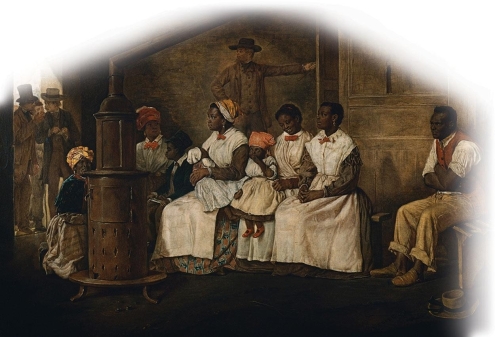
Why did biblical themes from the story of the Exodus figure so prominently in slave spirituals and religion?
A) It told of the Israelites' escape from slavery.
B) It chronicled the story of creation.
C) It promised salvation in the afterlife.
D) It instructed slaves to use violence against their masters.

Unlock Deck
Unlock for access to all 50 flashcards in this deck.
Unlock Deck
k this deck
47
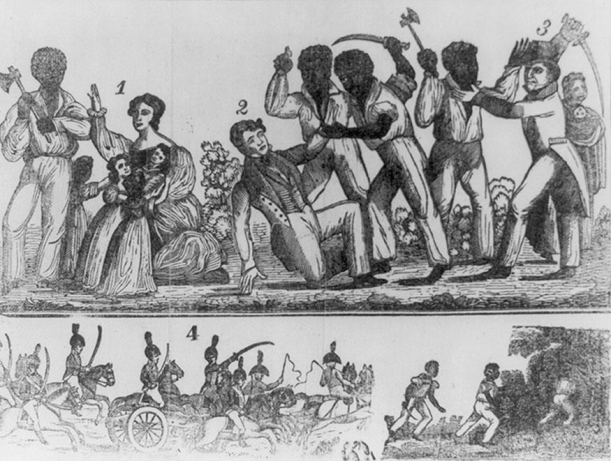
These woodcut images depicting the murder of defenseless white families by rebel slaves and the pursuit of slave insurrectionists by the militia during Nat Turner's Rebellion in 1831 Virginia were meant to generate from viewers what type of attitude toward Nat Turner and his followers?
A) militaristic
B) heroic
C) unsympathetic
D) patriotic

Unlock Deck
Unlock for access to all 50 flashcards in this deck.
Unlock Deck
k this deck
48


The presence of the plantation master and mistress, who are barely visible between the two large trees in the lower right corner of the painting Plantation Burial, serve as a visual reminder that .
A) they were unsettled by this strange night-time ritual
B) they disapproved of the funeral since it lacked Christian traditions
C) slaves at the funeral appreciated their master and mistress being in attendance
D) slaves were never free from the watchful eyes of their masters

Unlock Deck
Unlock for access to all 50 flashcards in this deck.
Unlock Deck
k this deck
49

What resulted from an 1847 strike by white workers at the Tredegar Iron Works in Richmond, Virginia?
A) The slaves and the white workers together formed a labor union.
B) The enslaved African Americans who worked at the factory were all terminated.
C) Having slaves and free whites working together at any Southern factory was outlawed.
D) The only white workers remaining supervised an exclusively enslaved labor force.

Unlock Deck
Unlock for access to all 50 flashcards in this deck.
Unlock Deck
k this deck
50

What emotion is most evident among the slaves being put up for auction that is about to take place in the painting The Slave Market, Richmond, Virginia?
A) tranquility
B) rebelliousness
C) resignation
D) joyfulness

Unlock Deck
Unlock for access to all 50 flashcards in this deck.
Unlock Deck
k this deck



